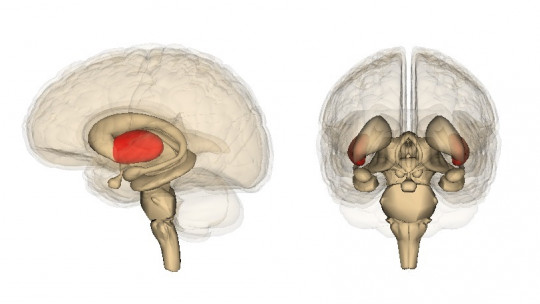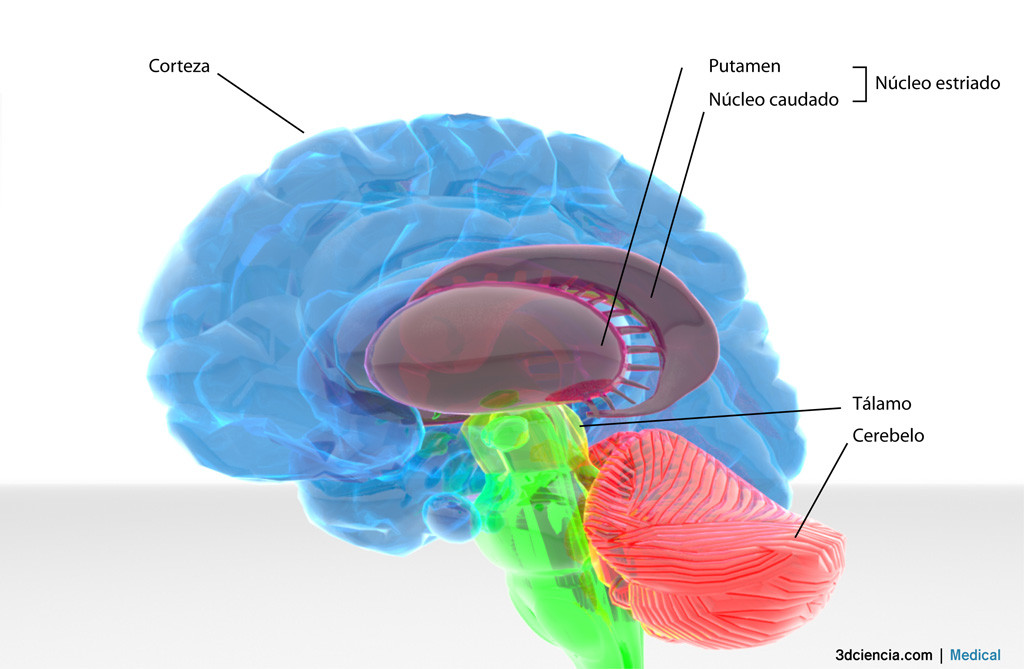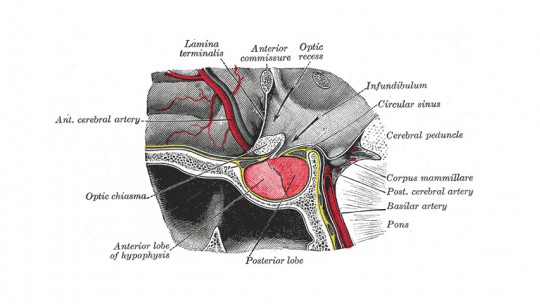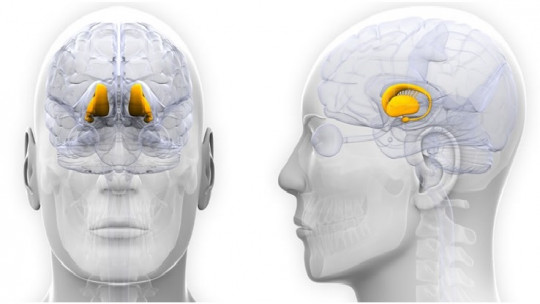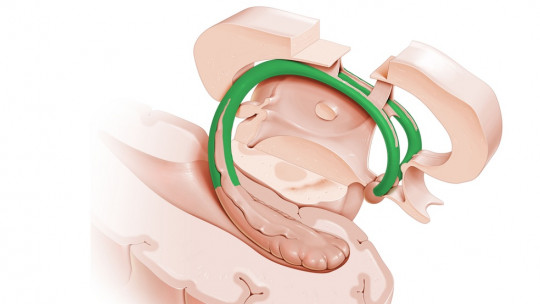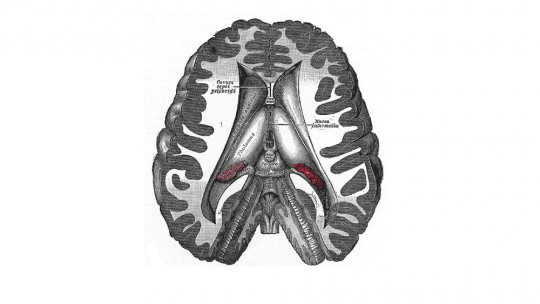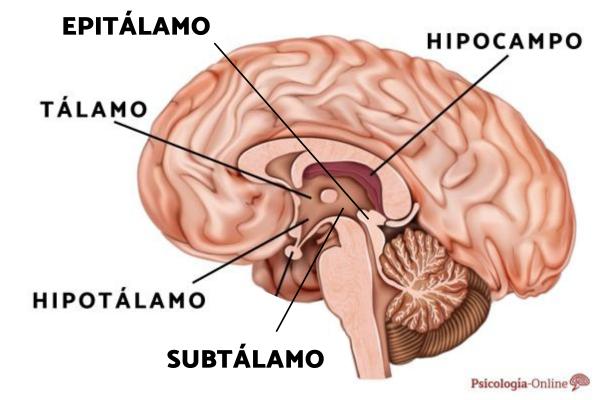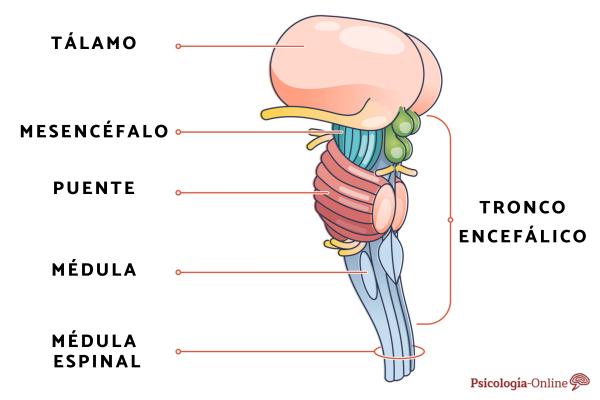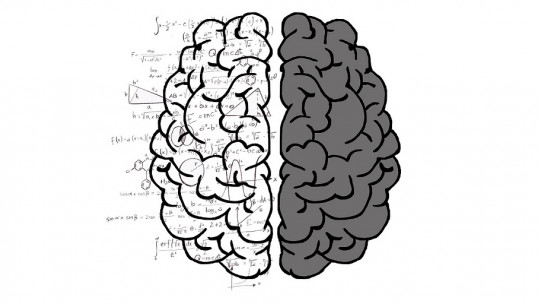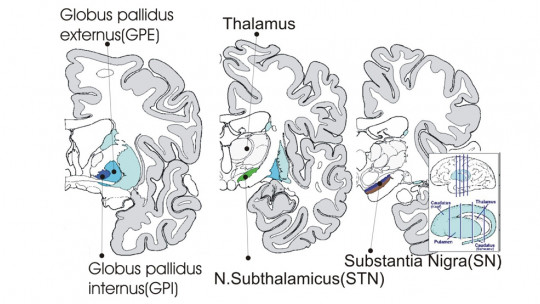He thalamus It is one of the most important parts of the brain. Not only is it one of the largest brain structures, but it is also located in the very center of the brain, as reflected by its name, which comes from the Greek word thalamos (or “inner chamber”).
By occupying so much and being so well connected with the rest of the parts of the brain, The thalamus is involved in a large number of mental processes that shape our way of perceiving things and acting on the environment that surrounds us… even if we don’t realize it.
What is the thalamus?
The thalamus is basically a collection of gray matter (neuron bodies) formed by two egg-shaped brain structures that are located below the cerebral cortex. These structures are located next to each other, and in addition to having the same shape and size, they have a symmetrical arrangement, as do the two cerebral hemispheres that cover them. They communicate with each other through a kind of bridge that keeps them together and is called the interthalamic connection.
The thalamus is part of an area called diencephalon The diencephalon is located between the cerebral cortex (and all lobes of the brain) and the upper part of the brain stem. In turn, the diencephalon is made up of the thalamus, the hypothalamus (located just below the first) and some other smaller structures.
Furthermore, the thalamus has a symmetrical shape and, being located just below the space that separates the two cerebral hemispheres, it has access to both sides of the brain. To see how it interconnects with these parts, we can take a look at the structures of the thalamus and the types of neurons in it.
The structures of the thalamus
The thalamus is basically a collection of neuron bodies, that is, a gray matter structure, like the cerebral cortex. But Within this set of neuronal groups, a series of nuclei of the thalamus can be distinguished:
Neurons in the thalamus
The thalamus It is made up of many other specialized substructures, but they are all neurons and glial cells Like any other part of the brain, the thalamus only has a reason to exist if it is connected to other areas of the nervous system, and this is reflected in the type of neurons that make it up. In their distribution it is noted that they are associated with many other bundles of neurons that come from many parts of the central nervous system.
From a functional point of view, The classes of neurons in the thalamus are as follows:
The functions of the thalamus
We have seen that the thalamus is very well connected, but its role is not to be a simple communication bridge between relevant parts of the brain. The thalamus itself is a structure that plays an active role in processing information that comes to it from other areas. But… What are the functions performed by this brain structure?
1. Integration of sensory data
The most well-known and studied function of the thalamus is being one of the first stops in the brain for the information that comes to us through the senses with the exception of smell.
The thalamus processes this sensory information, discards the parts that are not too important and sends the final result to the cortex of the brain, where this information will continue to be processed.
Thus, it facilitates the integration of sensory information to move from raw data to relatively complex information units and capable of holding meaning for us. In any case, it must be clear that this process not only takes place in the thalamus, but also involves several networks of neurons distributed throughout practically the entire brain.
2. The sleep-wake cycle
The thalamus, like its younger brother the hypothalamus, is involved in regulating the rhythm with which the sensation of sleep comes and goes. This function, in addition to being fundamental for regulating all nervous activity in general, is also related to the following.
3. Attention and awareness
Recent research indicates that the thalamus could play a very important role in the emergence of consciousness and everything that is related to it; from the ability to think about one’s own thoughts, to the use of language, through the ability to focus attention on specific information according to the objectives one has at any given moment.
However, it is important to note that these processes related to conscious states are not consciousness itself, although they appear in parallel. We cannot focus our attention on anything when we do not realize that we exist, and we cannot speak or reflect; but when we are conscious, there are aspects of attention and language that are beyond consciousness.
Furthermore, all these complex mental processes related to abstract thinking require the participation of many areas of the brain, not just the thalamus; This part of the diencephalon is a necessary but insufficient component when it comes to making thought, attention and language take place (something that can be said of practically all parts of the brain, because they all work in an interconnected way).
Because the thalamus is so well connected to many areas of the cortex at once, it may be able to intervene in the synchronization of the neuronal activity necessary to maintain the level of consciousness. Without it, the rest of the parts of the brain become non-functional, at least in the vast majority of cases. There may always be exceptions of people born without a thalamus or with a very poorly developed one and who, despite this, can live for many years; In cases like this, the rest of the brain would have learned to reconfigure itself to carry out the tasks of this absent structure using other networks of neurons.
4. The regulation of emotions
The thalamus is not only connected to circuits that carry sensory information, but It also interacts with neural pathways that directly participate in the appearance of emotional states It is not in vain that the thalamus is surrounded by the limbic system.
Thus, the thalamus integrates these two pathways and works by bringing together these two types of information, causing emotions to affect what is perceived and vice versa. In addition, it receives information from the hypothalamus, which in turn is directly involved in the regulation of emotions and the segregation of different types of hormones into the bloodstream.
Conclusion
The thalamus is one of the largest parts of the brain and, furthermore, it seems to play a role in a multitude of functions that neither look too similar nor have much to do with each other at first glance.
However, this is a reflection of the functioning of the nervous system itself, in which all the time, regardless of whether we are sleeping or awake, a multitude of processes are being carried out in parallel and at the same time in a coordinated manner.
It also has a very relevant role in the appearance and maintenance of brain activation states responsible for keeping us aware of our own existence and what is happening around us. This has caused the thalamus has come to be considered “the switch of consciousness”
However, the thalamus itself is not the part of the brain in which consciousness “resides.” Assuming this would be like thinking that a pixie exists inside our head with self-consciousness that is surrounded by non-conscious matter just as the pilot of an airplane would do; That is, it would make us fall into the dualism of philosophers like René Descartes.
It is currently understood that consciousness is the result of the activity of various parts of the brain (among which the thalamus stands out) working with each other at high speed and in a coordinated manner, and therefore this mental state cannot be reduced to a single structure.

